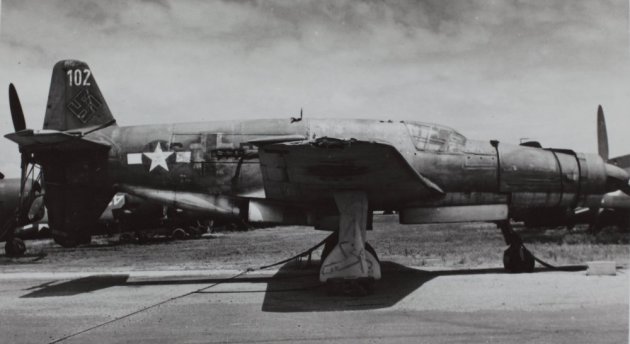The Innovative Dornier Do 335 Pfeil Came Too Late to Save Germany

During World War I the world’s military forces learned the benefits of airpower during battle. In World War II, those benefits became the primary mode of fighting in many theaters of war.
The Germans learned in WWI to strike quickly and decisively with their air force and then send in the ground troops to clean up. This tactic allowed them to quickly gather territory in Poland. But when they stretched the battle lines to Great Britain, the tactic stalled.
Near the end of the war, the Germans turned to the Dornier company to manufacture a fighter/bomber that would turn the tide of the air war in their favor. They responded with one of the fastest piston-engine aircraft of WWII, the Do 335 Pfeil (German for “Arrow”).

The plane was unique in that it had two engines in a push-pull layout. One engine was in the nose to “pull” the plane and the other was in the tail to “push” it. This was similar to a design Dornier had used to some success on flying boats only those planes had the two engines placed back to back on top of the plane. The Do335 placed the pilot in between the two engines.

Having two engines in this configuration reduced aerodynamic drag and kept the edge of the wing clean. It also meant that a single engine failure did not cause the plane to spin wildly out of control. In fact, pilots found that the plane handled and maneuvered well, accelerated quickly and turned tightly.
The rear engine could potentially cause issues if a pilot needed to bail out of the plane so a sophisticated ejection system was designed. Exploding bolts in the tail would cause the tail (including the engine) to release from the plane. Then a compressed air system would jettison the pilots seat from the plane.

The plane went through several iterations during testing and at least one update in production. Delays in the delivery of the engines caused by the Allied bombing campaign pushed the production of the plane back.
By the end of the war, Dornier had only succeeded in completing 48 of the Do 335s. Nine more were under construction at war’s end. None of the planes were ever flown in combat though one was spotted by a French pilot. The German was able to use the exceptional speed of the Do 335 to escape.
Only one Do 335 still exists. It was sent from Germany to the US for examination. The US Navy sent the plane to the Smithsonian National Air Museum in 1961. In 1974, it was sent back to Germany to be restored at the Dornier factory. Some of the craftsmen who originally built the plane still worked for the company and helped with the restoration. They were surprised to find the original exploding bolts still intact in the tail.

The plane remained in Germany until 1986 when it was returned to the National Air and Space Museum in the US.
Another Article From Us: Chelsea FC Adopts Lancaster Bomber at RAF Museum
The innovative Do335 was one of the most impressive planes built in WWII. No piston-engine plane has been able to match it’s performance since. Had it come along sooner, it may have been a difference-maker in the war.
